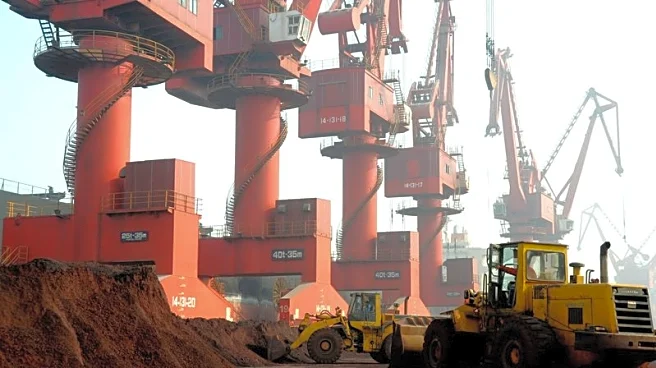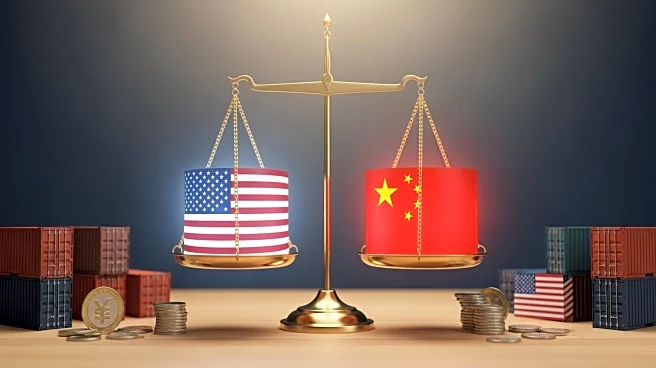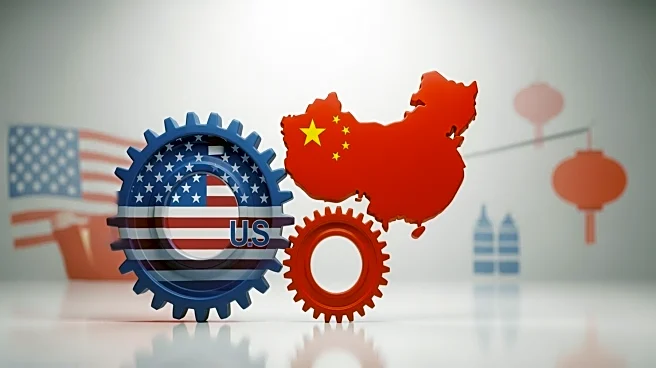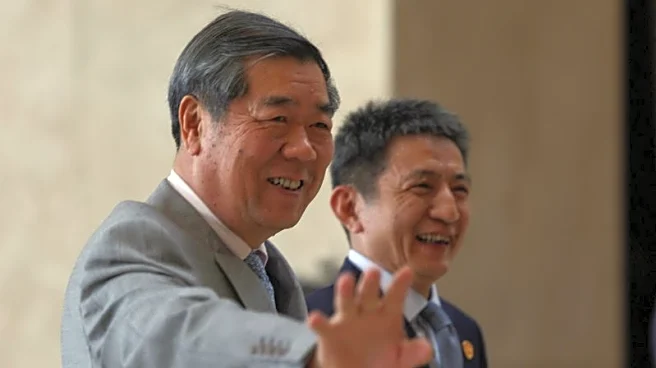What's Happening?
Shares of US-listed rare earth miners fell after the US and China reached a framework for a trade deal that could pause planned US tariffs and Chinese export controls on critical minerals. This development
eases fears of supply disruptions that had boosted the sector. The truce marks a pause in strategic US-China trade tensions, with supply risks receding. Shares of Critical Metals, Ramaco Resources, and NioCorp Developments saw significant declines. China processes over 90% of the world's rare earths, while the US has one operational rare earth mine, highlighting the disparity in supply chain capabilities.
Why It's Important?
The trade truce between the US and China is a pivotal moment in the ongoing trade tensions, particularly concerning rare earth minerals crucial for various industries, including defense and technology. The pause in tariffs and export curbs may stabilize supply chains and reduce costs for US companies reliant on Chinese materials. However, it also underscores the US's dependency on China for rare earths, highlighting the need for domestic supply chain development. The truce may impact investor sentiment and market dynamics, influencing stock prices and strategic decisions in the rare earth sector.
What's Next?
The preliminary trade deal is expected to be reviewed by President Trump and Chinese President Xi Jinping at the upcoming APEC summit. The outcome of these discussions could further influence trade policies and market conditions. US companies may continue efforts to secure domestic supply chains and reduce reliance on Chinese imports, potentially leading to increased investment in mining and processing infrastructure. The truce may also prompt strategic shifts in international trade relations, with potential implications for global economic stability.
Beyond the Headlines
The trade truce highlights the geopolitical complexities of rare earth mineral supply chains, where strategic interests and economic dependencies intersect. It underscores the importance of international cooperation in addressing supply chain vulnerabilities and fostering sustainable trade practices. The development may also influence broader discussions on trade policy and economic diplomacy, as countries navigate the challenges of balancing domestic interests with global trade dynamics.












